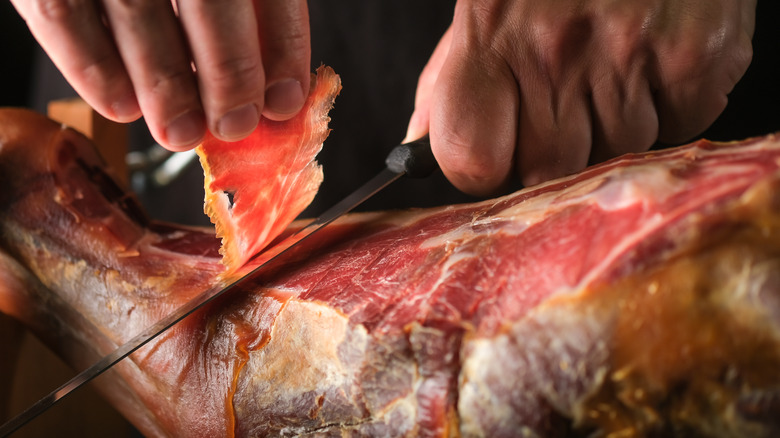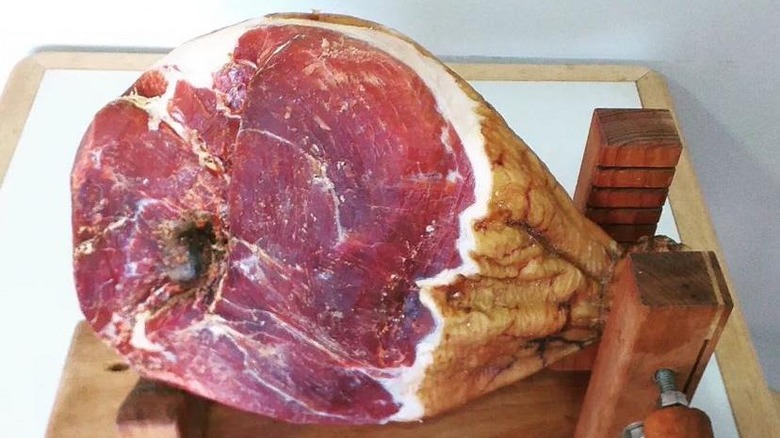Prosciutto Cotto Vs. Crudo: What's The Difference?
Prosciutto, the Italian word for ham, is a specific type of ham crafted from the hind legs of pigs. It is cooked or dry-cured and aged without preservatives or chemicals, using a technique that dates back more than 1,000 years, according to Parma Crown. Prosciutto is a product of freshly butchered pork, regional sea salt, and fresh air. The Italian meat has expanded its scope and become a staple on charcuterie boards, pizzas, and salads in the U.S. and all over the world.
Italians don't rush anything, whether it is a stroll during sunset, a meal made to savor, or a perfect bottle of wine, so it makes sense that making prosciutto takes time. The pork requires specific care and careful preparation to be authentic. It is typically prepared in one of two ways that yield very different results– prosciutto crudo or prosciutto cotto. So what's the difference between the two varieties?
Prosciutto cotto
The main difference between to two varieties of prosciutto is how they are cooked (or not cooked). Prosciutto cotto is a pale pink, delicately flavored ham produced in most regions across Italy. La Cucina Italia reports that cotto differentiates itself from other prosciutti because it is brined or steamed. The hams are deboned and then slowly cooked in a salty brine at low temperatures for an extended period, sometimes up to four days, per Yummy Bazaar.
Some cotto is flavored with aromatic herbs and spices before being brined and aged, per Eataly. Most of the fat marbling dissolves during the cooking process, leaving a lean and flavorful ham that is lower in sodium than its salt-cured sibling. Cotto is still thinly sliced but may not be paper thin like crudo. MasterClass indicates that cotto may be sold as deli-style ham. Cotto is a delicious addition to charcuterie boards, sandwiches, or pizza.
Prosciutto crudo
Prosciutto crudo is a bone-in, raw ham that has been salt cured and aged. It has a ruby red hue and a more intense flavor than cotto, per Honest Cooking. Its prominent layer of snow-white fat marbling balances the saltiness of the ham.
There are various types of prosciutto crudo, many of which are specific to certain regions and have legal protections called Protected Designation of Origin, or DOP. This designation ensures that they come from the place they claim and adhere to traditions of production established in those regions. Tuscans produce an aromatic, herbal prosciutto Toscano DOP in central Italy. Classic prosciutto di San Daniele DOP comes from the province of Udine in the Friuli Venezia Giulia region in northeastern Italy. The most famous Italian ham is prosciutto di Parma DOP, from Emilia Romagna. It is here, under the strictest regulations and steeped in cultural lore, that prosciutto has become an art form.


